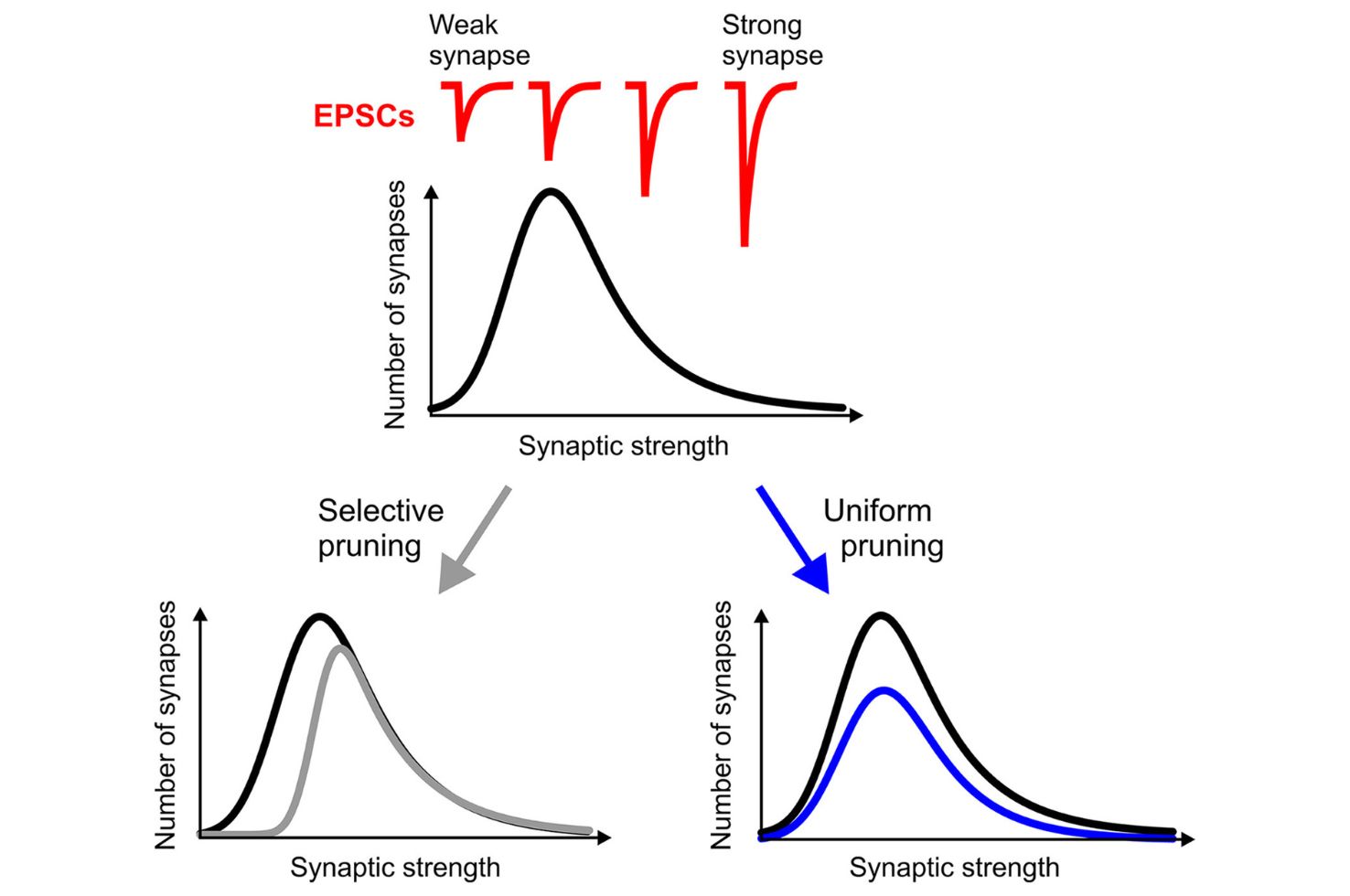Biological Psychiatry: Strength of Excitatory Inputs to Layer 3 Pyramidal Neurons During Synaptic Pruning in the Monkey Prefrontal Cortex: Relevance for the Pathogenesis of Schizophrenia

Cognitive deficits, among the most debilitating clinical features of schizophrenia, might reflect, at least in part, circuit dysfunction in the dorsolateral prefrontal cortex. In schizophrenia, layer 3 pyramidal neurons of the dorsolateral prefrontal cortex exhibit deficits in markers of excitatory synaptic inputs that are thought to disrupt the patterns of neural network activity essential for cognitive function. These deficits are usually interpreted under Irwin Feinberg’s hypothesis of altered synaptic pruning. A key postulate of Feinberg’s hypothesis is that the pattern of normal excitatory synapse pruning during adolescence is similar to that observed during early cortical development, when pruning selectively eliminates weak/immature synapses. However, it is possible that normal pruning during adolescence follows a uniform pattern in which synapses are eliminated proportionally across the full distribution of synaptic strengths, preserving the relative strengths across all excitatory inputs to each neuron. Whether synaptic pruning selectively eliminates weak synapses or follows a uniform pattern remains untested.
Selective pruning of weak synapses or uniform pruning across all synaptic strengths are predicted to have substantially different effects on the functional maturation of cortical circuitry. Thus, determining which pattern characterizes pruning has important implications for understanding the causes and consequences of lower spine density on layer 3 pyramidal neurons in the dorsolateral prefrontal cortex of people with schizophrenia. To distinguish between these alternative models, Pitt Department of Psychiatry scientists Guillermo Gonzalez-Burgos, PhD (Associate Professor of Psychiatry) and David Lewis, MD (Distinguished Professor of Psychiatry and Neuroscience, Thomas Detre Professor of Academic Psychiatry), and their colleagues Takeaki Miyamae, MD, PhD; Yosuke Nishihata, MD; and Olga Krimer, assessed the densities of dendritic spines, the site of most excitatory inputs to layer 3 pyramidal neurons, and the distributions of excitatory synaptic strengths in dorsolateral prefrontal cortex layer 3 pyramidal neurons from male and female monkeys across the periadolescent period of synaptic pruning. The study was recently published in Biological Psychiatry.
The investigators found the expected decline in dendritic spine quantity in biocytin-filled dorsolateral prefrontal cortex layer 3 pyramidal neurons during periadolescence, but did not find differences by age in the shape of the synaptic strength distributions or the average synaptic strength.
“This study is the first to assess the synaptic physiology correlates of adolescence-related synaptic pruning, reporting for the first time that the distribution of synaptic strengths in layer 3 pyramidal neurons remains stable through adolescence-related pruning. Our findings describe the baseline state that may be altered by aberrant pruning in schizophrenia,” said Dr. Gonzalez-Burgos.
Strength of excitatory inputs to layer 3 pyramidal neurons during synaptic pruning in the monkey prefrontal cortex: Relevance for the pathogenesis of schizophrenia
Gonzalez-Burgos G, Miyamae T, Nishihata Y, Krimer OL, Lewis DA.
Biological Psychiatry, 2023, ISSN 0006-3223, https://doi.org/10.1016/j.biopsych.2023.01.019.
